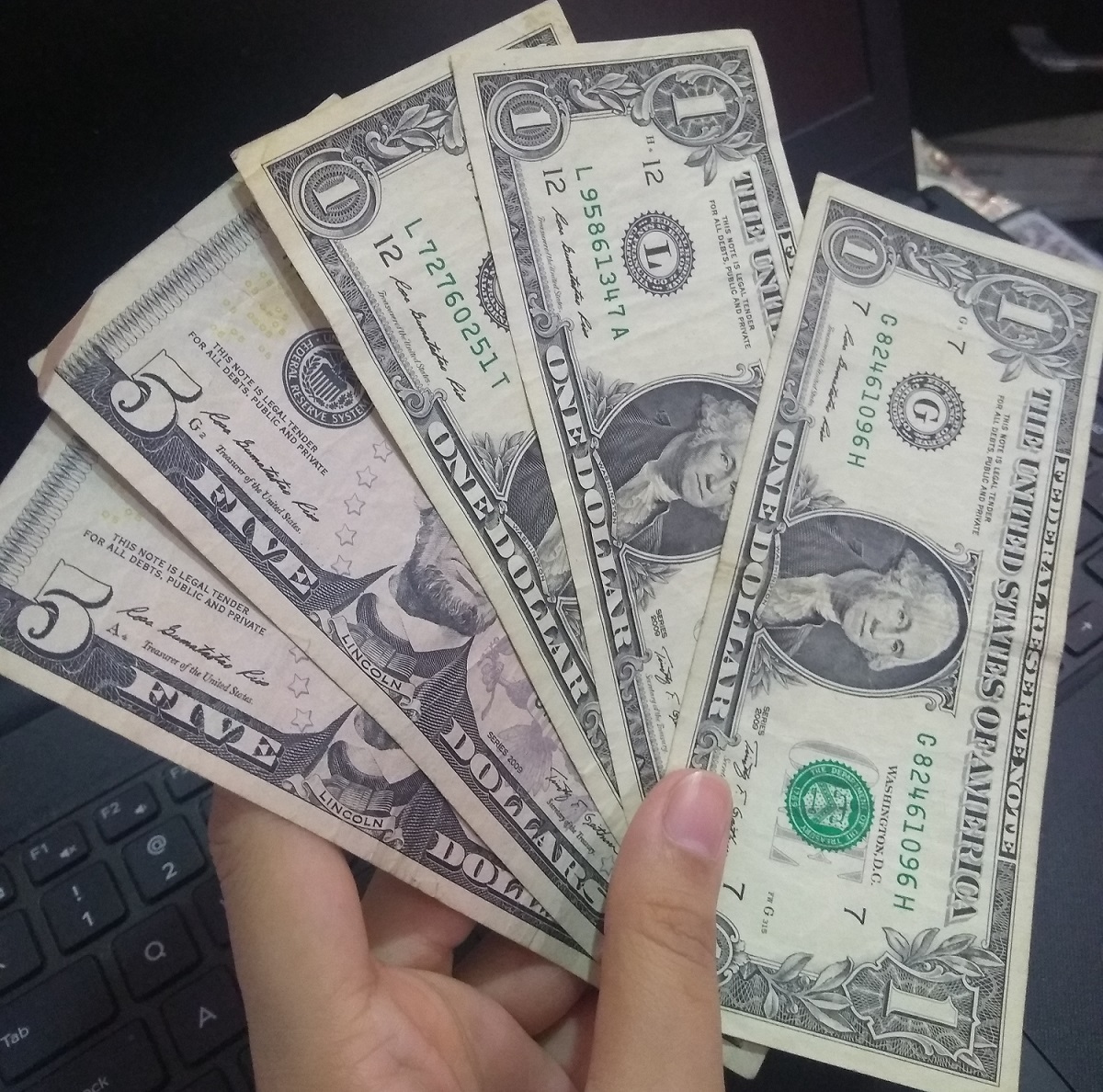
Amidst all the gloom and doom of Covid-19 pandemic there is a positive development on India’s foreign exchange (forex) reserves. The country’s forex reserves crossed $500 billion mark for the first time. After China and Japan, India now has the third largest forex reserves.
The record increase in the forex reserves has come at a time when the economy is heading for a recession. According to the World Bank and other major forecasts, India’s GDP is set to contract during the current year for the first time in over four decades. Why has India’s forex reserves risen to a record high when the economy is in such a big trouble?
Before talking about the reasons for the increase, let’s first see what constitutes forex reserves. There are four components of foreign exchange reserves – Foreign Currency Assets, Gold, Special Drawing Rights (SDRs) of the IMF, and Reserve Position in the IMF. The biggest component of India’s forex reserves is Foreign Currency Assets followed by Gold and the Reserve Position in the IMF. SDRs are the smallest part.
India’s forex reserves crossed $500 billion mark during the week ended 5 June 2020. The value of the country’s total foreign exchange reserves stood at $501.70 billion. In rupee term it stood at Rs.37.92 lakh crore.
During the first week of June – 1 June to 5 June period – $8.22 billion was added in India’s forex reserves. In rupee term the increase in the value was Rs.60,421 crore. The forex reserves increased despite a drop in the value of gold reserves during the week.
During the first week of June – 1 June to 5 June period – $8.22 billion was added in India’s forex reserves. In rupee term the increase in the value was Rs.60,421 crore. The forex reserves increased despite a drop in the value of gold reserves during the week. The value of gold reserves dropped by $329 million during the week.

The reason for the increase in the forex reserves was a sharp jump in the value of foreign currency assets. It increased by $8.42 billion during the week ended 5 June. The value of foreign currency assets increased to $463.63 billion as on 5 June 2020. The foreign currency assets have increased by $21.41 billion since the beginning of the current fiscal year and $67.83 billion since January. So clearly there is a consistent increase in the foreign currency assets.
Why India’s Forex Reserves Rising
The biggest component of India’s forex reserves is foreign currency assets. It is maintained in the world’s major currencies like the US dollar, Euro, Britain’s Pound Sterling, and Japanese Yen. The forex reserves increase mainly on account of purchase or sale of foreign exchange by the central bank, income arising out of the deployment of foreign exchange reserves, external aid receipts of the government and revaluation of assets.
There are two main reasons for the recent increase in foreign currency assets. These are: increased inflow in the form of foreign portfolio investments and FDI; and reduced outflow due to a sharp drop in crude oil prices and other import bills and savings on foreign travels by Indians.
There are two main reasons for the recent increase in foreign currency assets. These are: increased inflow in the form of foreign portfolio investments and FDI; and reduced outflow due to a sharp drop in crude oil prices and other import bills and savings on foreign travels by Indians.
Foreign Direct Investment (FDI) in India stood at $4 billion during the month of March and $2.1 billion in April, the first month of the current financial year, according to the RBI data.
Foreign portfolio investors have increased investments in the Indian stock markets on the expectations that the recovery in the Indian economy would be faster than other global peers, especially the United States and the European countries, which are staring at huge contraction in their GDP due to the Covid-19 pandemic.
Savings on Oil Imports
Crude oil prices plummeted in the international markets due to a plunge in demands as major economies across the world resorted to full or partial lockdown in a bid to contain the spread of Coronavirus disease. The plunge in the crude oil prices has resulted in huge savings in forex for India.
Earlier this week Ministry of Petroleum and Natural Gas announced that the country’s underground strategic oil storage were filled taking advantage of the low crude oil prices in the international markets. This led to savings of Rs 5000 crore in foreign exchange. “Taking advantage of low crude prices due to the COVID-19 situation, India filled its strategic reserves to full capacity,” the ministry said in a tweet last week.
India is the world’s third largest consumer and importer of oil. India meets 83 per cent of its oil needs through imports. High crude oil prices put pressure on India’s forex reserves while low prices lead to savings in the valuable foreing currency. As the crude oil prices are consistently low in the recent months it has led to savings in the foreign currency. Import bills of other products have also come down. This has led to low outflow of foreign currency from India.
Why Do We Need Forex Reserves
Forex reserves are assets held on reserve by a central bank in foreign currency. In the case of India this asset is held in reserve by the Reserve Bank of India (RBI), which is the central bank of the country. A high forex reserve provides a level of confidence to the markets. It gives the confidence that the country has a sufficient backing to meet external payment obligations, especially in the time of national disasters or emergencies.
The high forex reserves give the central bank a comfort in managing external and internal financial issues. In the case of fluctuations in the currency markets the central bank can intervene and maintain a favourable exchange rate if it has a high reserves. The best example is China, which has consistently kept its currency undervalued to support exports. Experts believe that Chinese currency Renminbi is undervalued by around 30 per cent. A high reserves give China a muscle to dominate in the currency market.
The high forex reserves give the central bank a comfort in managing external and internal financial issues. In the case of fluctuations in the currency markets the central bank can intervene and maintain a favourable exchange rate if it has a high reserves.
While keeping currency undervalued is not in India’s interest as it is a net importer, the high reserves would give the Indian central bank a good muscle power to effectively manage the currency fluctuations and meet the balance of payments obligations.
High reserves is also crucially important to maintain public confidence in the currency and overall economy. It gives confidence to the external lenders. If a country has high forex reserves it is in a good position to repay the external debts. India’s forex reserves today is enough to meet a year’s import bills.
How India Compares with Other Countries
China is the world’s biggest holder of foreign exchange reserves. It holds over $3 trillion in forex reserves, which is significantly higher than India’s Gross Domestic Product (GDP). China’s forex reserves rose to $3.102 trillion in May.
Japan is the second biggest holder of forex reserves. At the end of May 2020 Japan’s forex reserves stood at $1.37 trillion. India now has the third largest forex reserves in the world.
Interestingly, the forex reserves of the United States is far less than India. It is around $130 billion. For a country of over $20 trillion size a forex reserve of $130 billion is insignificant. The reason for low US forex reserves is that its currency is the most dominant in the world. Majority of the forex reserves in the world is in the form of US dollar. If US has to maintain a high forex reserves it would be required to do so in other currencies not in its own currency. The global dominant standing of its currency provides the United States enough comfort without maintaining high reserves.
India Forex Reserves from $1 billion to $500 billion
India’s forex reserves have covered a long distance in the past three decades from less than $1 billion in June 1991 to over $500 billion now. In June 1991 India’s forex reserves was not enough to meet even three weeks of imports. Today the reserve is enough to meet over 17 months of import.
India’s foreign exchange reserves stood at $5.8 billion at end-March 1991 and slumped to below $1 billion mark in June 1991 resulting in a serious balance of payment crisis. A series of structural reforms introduced by Manmohan Singh as Union Finance Minister in Prime Minister P. V. Narasimha Rao led government has resulted in consistent rise in forex reserves.
India’s foreign exchange reserves stood at $5.8 billion at end-March 1991 and slumped to below $1 billion mark in June 1991 resulting in a serious balance of payment crisis.
The forex reserves increased gradually to$25.2 billion by end-March 1995. The growth continued in the second half of the 1990s, with the reserves touching the level of $38.0 billion by end-March 2000. Subsequently, the reserves rose to $54.1 billion by end-March 2002, $76.1 billion by end-March 2003.
India’s forex reserves crossed $100 billion in 2004. It rose to $113.0 billion by end-March 2004 and further to $141.5 billion by end-March 2005. The forex reserve crossed $500 billion in June 2020.
Reacting on the recent jump in forex reserves Chairman of Mahindra Group Anand Mahindra said the jump in forex reserves would work as a moral booster.
“30 years ago India had almost run out of forex. Now we have the 3rd largest global reserves. In these uncertain times this news is a moral booster. Let’s not forget our country’s potential & let’s use this resource wisely to get back on the growth path,” Mahindra said in a tweet.
While there is no denying the fact that the Indian economy is passing through a very tough times due to Coronavirus outbreak and lockdown. Millions of people have lost jobs in the recent months. A large number of them may fall back into extreme poverty. However, the increase in forex reserves is a moral booster. The RBI and the government must use this judiciously to boost the markets and the people’s confidence in India’s growth story.




